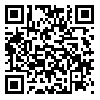Volume 15, Issue 3 (Autumn 2018)
bloodj 2018, 15(3): 195-202 |
Back to browse issues page
Download citation:
BibTeX | RIS | EndNote | Medlars | ProCite | Reference Manager | RefWorks
Send citation to:



BibTeX | RIS | EndNote | Medlars | ProCite | Reference Manager | RefWorks
Send citation to:
Hoseyni M, Haddadi E, Rakhshani M. Understanding the Organizational Culture in Khorasan Razavi, Northern Khorasan, and Southern Khorasan
Blood Centers based on Denison's Model. bloodj 2018; 15 (3) :195-202
URL: http://bloodjournal.ir/article-1-1089-en.html
URL: http://bloodjournal.ir/article-1-1089-en.html
Abstract: (3899 Views)
Abstract
Background and Objectives
Iranian Blood Transfusion Organization as a leading and thriving organization with a scientific look at the organization's culture should enable managers to decrease the gap between the status quo and the desirable situation through identifying the employees' perceptions and expectations, prioritizing the issues, and comparing the working groups.
Materials and Methods
This descriptive cross-sectional study was carried out in blood centers of three provinces of Khorasan in 2015; to gather information, a 60-question questionnaire and a census sampling method were used. Further, to analyze the data, descriptive (frequency distribution, mean, standard deviation) and inferential (independent T-test, Anova, Tukey, Pearson coefficient) statistics were used based on demographic variables using SPSS and Excel softwares.
Results
After gathering the information of community including 78 women and 146 men, it was found that the blood centers of the three provinces of Khorasan had a moderate and strong organizational culture with a score of 198.93. In addition, the mission had the highest impact among different dimensions of organizational culture with the score of 50.31. However, it needs to be improved in “customer orientation” and “capacity development” indices.
Conclusions
Studies show that the staff are well acquainted with the vision and strategic intentions. Hence, more trust and value should be given to the group and teamwork. In addition, with regard to the customer orientation index score, the ability of employees should be increased through holding retraining courses. And the decision makers should create an atmosphere for staff motivation, customer appreciation, and capacity development.
Background and Objectives
Iranian Blood Transfusion Organization as a leading and thriving organization with a scientific look at the organization's culture should enable managers to decrease the gap between the status quo and the desirable situation through identifying the employees' perceptions and expectations, prioritizing the issues, and comparing the working groups.
Materials and Methods
This descriptive cross-sectional study was carried out in blood centers of three provinces of Khorasan in 2015; to gather information, a 60-question questionnaire and a census sampling method were used. Further, to analyze the data, descriptive (frequency distribution, mean, standard deviation) and inferential (independent T-test, Anova, Tukey, Pearson coefficient) statistics were used based on demographic variables using SPSS and Excel softwares.
Results
After gathering the information of community including 78 women and 146 men, it was found that the blood centers of the three provinces of Khorasan had a moderate and strong organizational culture with a score of 198.93. In addition, the mission had the highest impact among different dimensions of organizational culture with the score of 50.31. However, it needs to be improved in “customer orientation” and “capacity development” indices.
Conclusions
Studies show that the staff are well acquainted with the vision and strategic intentions. Hence, more trust and value should be given to the group and teamwork. In addition, with regard to the customer orientation index score, the ability of employees should be increased through holding retraining courses. And the decision makers should create an atmosphere for staff motivation, customer appreciation, and capacity development.
Type of Study: Research |
Subject:
PhD of Management of Organizational Behavior Utilizing Human Resources
Send email to the article author
| Rights and permissions | |
 |
This work is licensed under a Creative Commons Attribution-NonCommercial 4.0 International License. |






